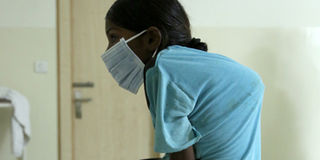Long-term back pain shouldn't be ignored

The physical appearance of Pott Disease of the spine. Photo | Internet
What you need to know:
The widow wasn’t my first ‘spinal TB’ patient that week, I encountered four patients diagnosed with the same.
A widow from Singida arrived few weeks ago at the hospital I was stationed at in Dodoma with excruciating back pain and lower limb numbness.
The 67-year-old could hardly stand tall or walk, she was living with this discomfort for a year now.
The tests revealed that the woman had tuberculosis (TB) of the spine, or what we term as ‘pott’s disease’ [a form of tuberculosis that occurs outside the lungs whereby disease is seen in the vertebrae, such as the case of the widow.]
Interestingly the widow was brought in by her long-serving concubine who not only settled all her hospital bills but also has been taking care of her since she lost her husband 20 years ago.
The woman’s back pain never got assuaged by anti-pains and she could barely support herself; she was eventually confined to complete bedrest. She was put on anti-TB medication, mind you early diagnosis and management is vital in preventing complications like paralysis. Many patients seek medical help when it becomes unbearable and this delays initiation of early treatment.
The widow wasn’t my first ‘spinal TB’ patient that week, I encountered four patients diagnosed with the same.
Spinal TB is one of the forms of extra pulmonary tuberculosis (EPTB), at the outset it’s important to know what it is. EPTB is an infection caused by TB bacteria that has spread beyond the lungs.
Her concubine requested I cast light on his patient’s diagnosis. I explained to him that spinal TB is simply the TB of the backbone, often referred to TB ya mgongo or TB ya Mifupa in Swahili.
He wondered aloud how this was possible. Then right off the bat, I responded by explaining him that when a person breathes in TB bacteria, the bacteria can settle in the lungs and begin to grow. From there they can move through the blood to other parts of the body including the spine.
Globally, between 10-15 per cent of the TB occur in extra pulmonary sites outside the lung. Apart from spine, other sites include lymph nodes, brain, larynx, abdomen and urinary system to mention a few.
Is TB of the spine contagious?
Spinal TB is not contagious but TB occurring in the lungs (PTB-Pulmonary TB) and larynx can be infectious.
Then, her concubine questioned, “mbona hata hakohoi, hii TB kaipata lini?” [How comes she isn’t coughing, when did she really get this?]
Most of the time when we are affected with TB, the disease is so mild that they do not even know they have it, hence difficult to diagnose.
Patients with latent TB do not have symptom unless the disease becomes active. Spinal TB patients can have same symptoms as people with TB in the lungs such as fever, night sweats, fatigue, weight loss and loss of appetite.
In addition, patients often have other symptoms specific to the body site, such as the widow who complained of back pain. Some doctors say that TB can either cause pulmonary symptoms or none at all.
Yes, it can be cured
The good news is that TB can be prevented, treated and cured. Treatment is often a success but it’s a long process – can take at least six months but EPTB are treated beyond that duration.
In Tanzania, TB is diagnosed through either sputum or chest x-ray. Other specific tests are not available in most health centres.
When you have TB, you have to take medicine the right way as the doctor advises. If you are not wearing a mask, cover your mouth and nose with a handkerchief or tissue. Keep your house well-ventilated by opening the windows.
The author is a medical doctor and a public health activist now based in Dar es Salaam.


